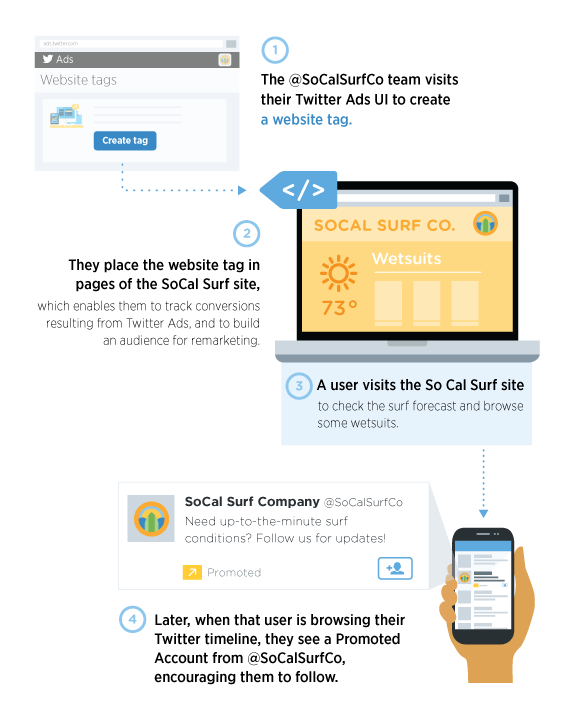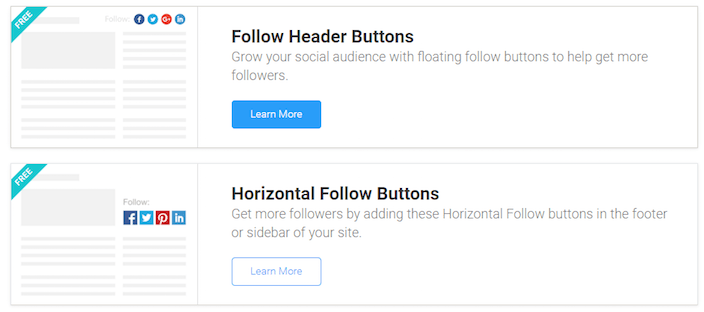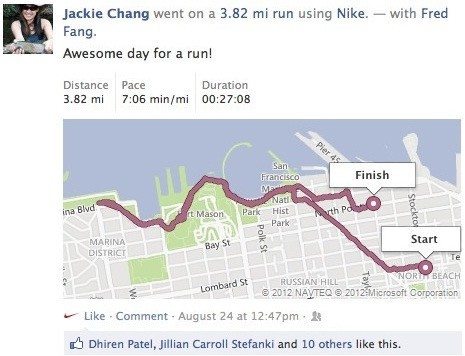Picture your post-click landing page as a car.
From the outside it looks shiny, it runs smoothly, and it gets you where you need to be. Step on the gas pedal to go. Spin the steering wheel to turn. Push the brake to stop.
Pretty simple process, right?
Wrong.
Pop open the hood and you’ll see countless moving parts working together to make your car look the way it does and drive the way it should.
On your website and your post-click landing page, those moving parts are on what’s referred to as “the back end.”
It’s where you find all the code that comes together to make the elements of your website display beautifully, but just as importantly, work seamlessly.
Key pieces of that code, called “marketing tags,” help you integrate a number of services like analytics, widgets, and advertising into your site.
They can collect and report data, like your car would with its “check engine” or “low fuel” indicator.
They’re capable of facilitating the integration of new add-ons, like your car would with a higher-powered engine or some new spark plugs.
They can also help you interact with other people the way a horn, a seatbelt, or air conditioner would.
Today we set out to reverse engineer some of the best cars, err, blogs on the web so that you can implement a solid tag management system with all of your digital marketing tags.
Using a nifty tool called Ghostery, we crawled all 15 of our “Top Marketing Blogs to Follow,” to find out what tags they were using and why they do.
Separated into categories based on their purpose, here are 31 of the most popular marketing tags used by some of the biggest names in the business.
Analytics
Google Analytics
Tags from Google Analytics were the most widely implemented on the blogs examined. That’s not surprising, considering it’s a free solution for capturing some powerful data on your website.
With it, you can customize your dashboards to determine which campaigns are bringing in the most conversions and traffic, where your visitors are coming from, and a whole slew of other statistics.
HubSpot
The Cambridge-based business has become known as the authority on inbound marketing — a technique that emphasizes using unpaid, organic tactics to draw visitors to websites. So, it’s no surprise that their analytics marketing tags focus on helping you understand your inbound marketing funnel.
Hotjar
Hotjar allows its users to employ the use of heatmaps, visitor recordings, feedback polls, surveys, and analytics to help them optimize their conversion funnels. Using HotJar marketing tags means gaining deeper insight about what you visitors want, and how to get it from them.
Crazy Egg
Here’s a service we’ve talked about before on the blog. Crazy Egg uses heat mapping technology to show you exactly where your users are clicking and looking to help you make better decisions about your site design. In the company’s own words, “Crazy Egg is like a pair of x-ray glasses that lets you see exactly what people are doing on your website.”
WordPress Stats
Marketing tags from this service allow WordPress users to see data like posting activity, popular days and hours, latest post summaries, referrals, clicks, and more.
New Relic
If a website is running tags from this tech company, they’re doing so to improve their software’s performance. As a strictly SaaS solution, New Relic deliver metrics to help businesses clearly see how their applications are performing.
Kissmetrics analytics
“Kissmetrics tracks individual and group visitor behavior from their first anonymous visit, through each conversion, to their lifetime value.” Another Neil Patel creation, this service helps businesses plug all the holes in their marketing funnel by offering a revenue reports, user search, data set design, A/B testing, and customer journey analysis.
Advertising tags
DoubleClick
The second most common source of tags on this list was DoubleClick. Acquired by Google in 2008, DoubleClick enables publishers to monetize their impressions (essentially the eyeballs their web pages attract) by allowing businesses to serve others’ ads on their website; and for advertisers, the service makes it easy to bid on ad placements on those sites.
Like many advertising technologies, DoubleClick also tracks your browsing behavior — what sites you visit and what ads you click on in an effort to make your ad experience more relevant.
AppNexus
Several of the blogs we crawled had AppNexus tags on their site. Similar to DoubleClick, the cloud-based platform provides a service that allows publishers and advertisers to serve and bid on ads. Marketers be wary, though. The company has made headlines over the last few years as a result of claims that much of the traffic flowing through its network is fraudulent.
Twitter Advertising
These marketing tags are designed specifically for Twitter. They help advertisers do things like track conversions, report on ROI, or even remarket (deliver ads based on clicking behavior) to an audience on the social network. Here’s an image from Twitter itself that shows how their remarketing tag works:

Google Dynamic Remarketing
Google’s powerful dynamic remarketing tag collects data like the ID’s of products that people view on a business’s website, the types of pages they viewed, and even the total value of those items. Then, it helps to serve advertisements based on that information to deliver a highly-targeted user browsing experience to users.
Facebook Custom Audiences
With Facebook Custom Audiences, businesses can place pixels on their websites to track visitors of specific pages, and segment based on their actions. When someone visits a page with a specific Meta Pixel, they are added to a list that marketers can target later with ads.
Tag management
Google Tag Manager
For many marketers today, managing tags can get wildly out of hand. From placing them on web pages, to testing them, then removing old ones, the process has become horribly tedious.
With Google’s Tag Manager tool, adding a new tag can be done with a few clicks, and changing them has never been simpler. Ultimately, it eliminates the need for IT at every step of the process.
Marketing automation
Customer.io
Injecting marketing tags from Customer.io allows you send more targeted messages, and segment users based on their website data. When you can create a profile of a user based on their behavior, you can send them more relevant emails at key moments during the customer journey.
Bounce Exchange
“Exit Intent” is an automated customer acquisition program that aims to keep visitors on your site by using a screen overlay. In simpler terms: Bounce Exchange is responsible for those in-your-face exit pop-ups you see when you try to leave a website.
LiveRamp
LiveRamp specializes in data collection and integration. Its solution allows marketers to get a 360-degree view of a customer based on behavioral information collected from both online and offline sources.
Act-On
Act-On software helps its customers automate their digital marketing campaigns with behavior tracking, email marketing optimization, and social media outreach. It’s a go-to for many small to medium sized businesses.
A/B testing & site optimization
Optimizely
Placing tags from Optimizely on your web pages allows you to A/B test different versions of them to determine which performs better based on captured user data. It’s similar to the tool that’s already built into Instapage’s software. A/B testing here means you can do so without having to worry about making any kind of adjustments to code.
Visual Website Optimizer
Similar to Optimizely, Visual Website Optimizer (VWO for short), allows you to “create and A/B test different versions of your website to continuously discover the best performing versions that increase your online sales.”
Tags from VWO allow for experimentation, user feedback, reporting, targeting, and more.
Widgets
Disqus
Way down at the bottom of this blog post, you’ll notice that we use Disqus, along with many of the other blogs on this list. In the company’s words, it’s a “networked community platform” that gives your website a “feature-rich comment system” complete with social integration and a number of other tools.
Adding code from Disqus to your website means adding a module to allow your readers to comment, ask questions, and discuss content with each other.
Gravatar
We know you’ve seen them — and maybe you even have one.
“Gravatar” is short for “Globally Recognized Avatar,” and it’s a picture that you upload to identify yourself on sites integrated with the service. Tags from Gravatar help websites pull your data — in this case, an image — to display next to your name when you interact on websites.
SumoMe
Growing your website’s traffic is no easy feat, but marketing tags from SumoMe attempt to help you achieve just that. Nearly 367,000 websites use tools like heat maps, list builders, and scroll bars to generate more new visitors, and convince existing ones to come back for more.
Hello Bar
One of the best tools for turning your blog into a lead generation machine, the Hello Bar sits at the top of your web page to help you accomplish a number of goals. Convert more visitors into customers, increase social media interaction, or get more email subscribers using tags from this Neil Patel co-creation.
Social media
Facebook Connect
We guarantee you’ve seen this before. You know the little button that allows you to log in to some of your favorite sites via Facebook? That’s what Facebook Connect is.

Using marketing tags from this service allows you to capture some of the information that Facebook has on its users — which is a whole heck of a lot.
Twitter Button
If your aim is to engage with your Twitter following, these are the buttons to help you do it. By inserting snippets of code into the back end of your website, you can get visitors to follow you, tweet something from your page, promote a hashtag, or mention your handle.
AddThis
AddThis helps you increase your shares, follows, subscriptions, and conversions with customizable social buttons for your website.

They offer buttons for every major social network in a number of different formats and arrangements.
Facebook Open Graph
By implanting specific code into the back end of your website, Facebook allows your visitors to share with their networks exactly what they’re doing in the moment — whether that be listening to a song on Spotify, or going for a run.

Google+ Platform
Want your visitors to engage with you on Google+? Then you’ll want to use this plugin.
With tags from Google’s social network, you can let users follow and engage with you without ever leaving ever leaving your website.
Buffer Button
If we were to compare the Buffer Button to the others on this list, we would tell you that it’s pretty much the same, with one major difference. Websites using this button allow their users to share content to Facebook or Twitter simultaneously, but they also have the option to do so at a later time through a unique scheduling feature.
Facebook Social Plugins
Like Twitter buttons, these social plugins let users “like,” “share,” and “send” their favorite content to their Facebook friends; and businesses get the benefit of being able to grow their social media presence right from their website.
Design
Adobe Typekit
Similar to Google Fonts, Adobe Typekit lets website owners display any number of customized fonts to match their branding.
Why would they want to do that?
Because typography has been shown to have a major impact on the way users perceive your brand, feel about your content, and how much they read your material.
But wait, there’s more!
If you think 31 is a lot, you should’ve seen the rest of the tags Ghostery uncovered on those blogs! These are just the most popular; the original list had 80!
So when it comes to your use of marketing tags, don’t be shy. Just remember: the more you have, the harder they are to manage, and the slower your site will be to load.
Use a tag manager if things get overwhelming, and always delete any tags you no longer need.
Sign up for an Instapage Enterprise demo today.

See the Instapage Enterprise Plan in Action.
Demo includes AdMap™, Personalization, AMP,
Global Blocks, heatmaps & more.
